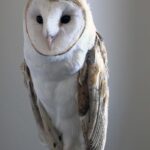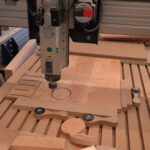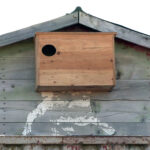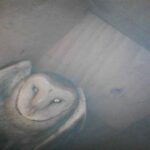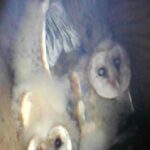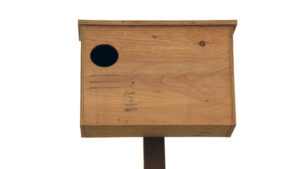Final report for WSP17-008
Project Information
The methodology used in FY18/19 are mini-grants for either workshops or larger conferences related to sustainable agriculture and travel mini-grants for professional development in sustainable agriculture topics. Funds will also be used for Farm to ECE efforts in Southern Idaho, in conjunction with another grant from the Idaho Health and Welfare Department. The target audience for the mini-grants are Extension Educators or other agriculture professionals who partner with Extension (i.e. non-profits, agencies, etc.). The themes of the 2018/2019 SARE PDP grant include sustainable agriculture, cover crops, farm to school, food systems, and small farms.
Ag professionals and producers will increase knowledge and understanding of sustainable production practices. Ag professionals and other groups will increase their awareness of the importance of local foods. Extension Educators, agency and NGO representatives, and other agriculture professionals will increase knowledge and capacity by integrating sustainable agriculture into their programming, providing SARE resource information, and one-on-one assistance to farmers. Agriculture professionals in the state will have a better understanding of WSARE programs and grant opportunities. Producers will increase their knowledge and implementation of sustainable agriculture practices.
Advisors
- (Educator)
- (Researcher)
- (Researcher)
- (Educator)
- (Educator and Researcher)
- (Researcher)
- (Educator and Researcher)
- (Educator)
- (Educator)
Education
In 2018, the Idaho SARE PDP educational approach was:
- Workshops
- Webinars
- Field Tours
- Videos
Education & Outreach Initiatives
With growing popularity, many growers are utilizing cover crops in their cropping systems. Because of the versatility of cover crops, growers are also experimenting with grazing cover crops using management intensive grazing. In management intensive grazing scenarios, cover crops are grazed multiple times throughout the growing season and producers are interested in knowing which species have the most longevity and potential for regrowth in this situation. The use of grazing in a cover crop system also provides added value to growers with benefits to soil health and additional income from leasing fields to livestock producers, or added feed for their own livestock. To this date no research on the regrowth potential of forage cereal cover crops in Idaho has been conducted. For this reason this is not a traditional yield study in that it is investigating a novel idea, looking at the regrowth potential of spring planted annual cereals.
In spring 2018, the research team, planted 5 varieties of forage cereals to determine the regrowth and longevity of cereal cover crops. These varieties were “grazed” with a forage harvester in a series where one set of plots was grazed 4 times, the next set of plots grazed 3 times, 2 times and once. This simulated grazing design will show how grazing at different stages of maturity effects the regrowth and longevity of the cereal forages. The idea for this study came from input from specialists, statewide stakeholders, and a research project at the Purdy Ranch in Picabo, Idaho. As technical advisors of a WSARE project on management intensive grazing of cover crops our team made observations of significant regrowth from cereal varieties throughout the growing season. Comments were made by the operator of the field that they were able to intensively graze the cereal varieties up to 4 times without damaging the plant. To research this hypothesis a study was designed and conducted at the Kimberly Research Center. The team requested SARE funds to pay for samples of ‘grazed’ cereal forage varieties for quality analysis. The analysis will determine which forage cereal varieties are best suited for intensive grazing and what potential they have for regrowth.
The mini-grant funds were used for analysis, but the outreach will occur in 2019. We will provide the results of this study at a field day and publish the findings in an extension bulletin. Producers will be able to use this information to make decisions about what cereal forage varieties would be best to incorporate into their seed mixes when using cover crops as a feed source for livestock. This research will continue for another year and so there are no results to present at this time. At the conclusion of the 2019 growing season the results will be calculated, and information shared with producers at local, state and regional meetings. This plot map details the field layout and treatments that were imposed.
In 2019, the results of this research were presented at the 2019 NACAA AMPIC in Fort Wayne, IN, the Idaho Hay and Forage Conference, the Western Alfalfa and Forage Symposium in Reno, NV as well as many producer meetings through out the region. In addition, an interview article about the project was published in the September 2019 Ag Proud Magazine and proceedings have been published in the Idaho Hay and Forage Meeting Proceedings of 2020 and the Western Alfalfa and Forage Symposium proceedings of 2019. Producers will be able to use this information to make decisions about what cereal forage varieties would be best to incorporate into their seed mixes when using cover crops as a feed source for livestock. The research team has plans to publish these data in an extension bulletin for use in the Pacific Northwest.
Sustainable, small producers are constantly looking for ways to add value to their agricultural products and increase their income. Many have small farm-based fruit and vegetable processing enterprises – drying, canning, pickling – and are selling their products direct to consumers at farmers’ market or on farm. Other farmers, who are interested in scaling up their processing and/or wish to do minimal processing (washing, chopping, etc.) for intermediated markets do not have the facilities needed on their farms. As a result, Extension educators, economic development organizations and non-profit organizations are exploring the development of commercial kitchen facilities. Often, they are looking to create facilities that will be “one-stop shopping” – without understanding the unique design, equipment, space and funding needs of different processing centers. At the same time, the Food Safety Modernization Act (FSMA) Preventative Controls for Human Food Rule requires specific practices and reporting for on-farm and commercial kitchen processing. Extension educators, economic development staff and other agricultural service providers need additional education on the potential of different processing facilities for use by small sustainable small farmers, a basic understanding of the FMSA Preventative Controls Rule (PCR) and information on where they and/or the producers they serve can obtain additional information. (All producers doing on-farm processing must comply with FSMA PCR by September 2018.)
This project sponsored three professional development field tours of value-added and shared use commercial kitchen facilities that serve small producers and local food entrepreneurs and one farm-to-school field tour of small commercial and school kitchens. Tour locations included the following facilities: Tour 1) Kitchen Spokane, Spokane, WA; Kitchen Coeur d’Alene, Coeur d’Alene, WA; Tour 2) Pasco Specialty Kitchen, Pasco, WA; Walla Walla Harvest Foods, Walla Walla, WA; Tour 3) Colfax Food Pantry, Colfax, WA; Community Action Center, Pullman, WA; Latah Country Fairgrounds, Moscow, ID; and, Tour 4) St. Maries School, Moscow, ID; Peterson Cookhouse, Moscow, ID; and University of Idaho Children’s Center, Moscow, ID. A total of 28 agricultural, food systems, food access and K-12 educational professionals participated in the tours. Of the 28 participants, 7 were Native Americans and 1 was Asian. The majority of participants were women (25 out of 28).
Participants used what they learned on the tours to:
- Inform community level plans to develop a shared-use commercial kitchen for Nez Perce Tribal members in Lapwai, Idaho.
- Design and build a farm-to-school kitchen facility at the new Palouse Prairie Charter School (construction will be complete August 2019).
- Design and build a new shared-use commercial kitchen at the Latah Country Fairgrounds (construction will be complete January 2019).
- Inform a USDA Local Food Promotions Proposal to developing a regional Food Hub with a value-added processing facility in the Walla Walla Valley of Washington. The proposal was funded and a feasibility study for the Food Hub and processing facility is currently being conducted. Anticipated completion date is June 2020.
Next steps: Participants identified the need for developing a regional shared-use commercial kitchen network and easy access to information about regional processing facilities. As a result, University of Idaho Extension – Northern District is developing a new website that will include information on commercial kitchen facilities in the Inland Northwest (north Idaho and eastern Washington) region with links directly to facilities websites. A new introduction to Small Scale Food Processing webinar-based workshop that covers the FMSA Preventative Controls in Human Food rule is in its final stage of editing and will be offered in several north Idaho locations in April 2019. University of Idaho Extension educators and staff who participated in the tours continue to disseminate information learned about establishing and managing shared-use commercial kitchens and provide technical assistance throughout the north Idaho region.
The Blaine County Food Council is A GROUP OF COMMUNITY STAKEHOLDERS COMMITTED TO CLOSING THE GAPS IN BLAINE COUNTY’S FOOD SYSTEM. Like many food councils across the country, we are a local organization that brings together food system stakeholders in a community to help solve local food system issues. For 2018, our committee focused on farm to school initiatives, Food System Strategic Planning, and communications. In 2019, SARE funding helped provide staffing for the Blaine County Food Council and host a one-day workshop focusing on the state of their food system.
The SARE funding helped to provide staffing for the Blaine County Food Council and developing a website. The website increased communication between the council and our local community and promoted local food system initiatives. The staffing helped to get initiatives off the ground and find additional grants to continue programs. For example, we received an AmeriCorps Member to get Farm to Preschool off the ground for our community. We used SARE funds to send this member to the Farm to Cafeteria conference. The member came back with many useful ideas which helped fueled our Farm to Preschool pilot study. The AmeriCorps member caught the attention of the Idaho Health Department. They became very interested in our pilot study.
In 2019, a one-day workshop entitled The State of Our Food System was hosted by the Blaine County Food Council. It included a stakeholder workshop and two public presentations. Approximately 120 stakeholders gathered together to learn, exchange ideas, and network.
A major outcome of the Farm to Preschool Pilot program was recieving a $63,000 grant from the Idaho Health and Welfare Department to expand our pilot program to a 10-county area. The goal is to decrease child obesity by helping youth at a young age develop healthy eating habits. An additional component to this, is youth eating local, sustainably produced food.
Attendees of the May 2019 The State of Our Food System events reported gaining increased food system knowledge, new social and business connections, expert guidance, along with feelings of hopefulness and camaraderie.
Idaho’s dairy industry is a major driver of the state economy and is ranked fourth in total annual milk production among U.S. states, with approximately 600,000 dairy cows that produced approximately 14.7 billion pounds of milk in 2017 (NASS 2018). Idaho’s dairy industry consumes more than 7 billion gallons of water (just for drinking water). Another 5 to 6 billion gallons of water are utilized for forage production, mainly through irrigation. As water is a limited resource, best management practices are needed to ensure a sustainable use of this resource.
We prepared and delivered a pilot educational program targeting Extension personnel, crop consultants, and dairy nutritionists. The project consisted of planting corn silage plots that were either subject to water stress or fully irrigated. Plots were planted at the University of Idaho Kimberly R & E Center . A “train the trainer” field day was held on September 13, 2018 (see attached flyer) and included a visit to the corn silage plots as well as a set of presentations that focused on the effect of drought stress on forage growth and digestibility and a general discussion about management strategies available to deal with low water inventories and/or low forage inventories on the dairy farm. A presentation targeting water conservation and irrigation practices was also delivered. Our invited speaker was Dr. Gonzalo Ferreira a Dairy Management Extension Dairy Specialist at Virginia Tech. Other speakers included Dr. Howard Neibling, University of Idaho Extension Irrigation Specialist, Dr. Mireille Chahine, Extension Dairy Specialist at the University of Idaho, Mr. Steve Hines, Extension Educator at the University of Idaho, and Miss. Lani Martin, Graduate student in the Animal and Veterinary Science at the University of Idaho.
Forage tissues from the plants as well as soil samples have been collected and analyzed and data are currently being summarized to be published. A video is also being developed and could be used as a tool to transfer knowledge to farmers.
The goal of this project is to protect pollinators and enhance beneficial insects through implementation of habitat on organic and specialty crop farms, plus farms transitioning acres to organic production. During spring and early summer 2018, Jade Florence will design and finalize planting plans for four previously-selected southern Idaho farms. Farms include one urban farm in Boise, ID, a community garden in Boise, ID, a large-scale organic farm in Shoshone, ID, and a mid-scale transitioning farm in Kimberly, ID. In the past, habitat plans were drawn by hand and were delivered with a written narrative to project partners. However, the use of a computer aided design software would allow Jade to increase the efficiency of this process and deliver professional renderings to farmer collaborators, project partners, and funders. In
addition, this software will allow Jade to automatically count plants in the renderings, print out plant lists and budget estimates, and adjust renderings as needed.
To increase the efficiency of this work, NCAP requests funds for Jade to take a course in AutoCAD, a computer aided design software that will allow her to develop these renderings. To compliment the online course, NCAP requests a stipend for Jade to intern with a local landscape design company. The internship component will allow Jade access to a skilled guide to answer questions during the learning process and introductory access to the design software while she’s learning and before the organization makes a full investment in a subscription service and the additional
equipment needed.
This skill will allow NCAP to work with farmers with enhanced efficiently and to
provide more farmers with habitat renderings that they can keep for future use.
NCAP requested funds to secure the tools necessary for its lead technical advisor and Healthy Food and Farms Program Director, Jade Florence, PhD to develop habitat renderings for on-farm pollinator and beneficial insect plantings. NCAP has been partnering with the Natural Resource Conservation Service since 2013 to develop conservation habitat on farms throughout the Treasure Valley and the addition of this skill would increase the efficiency of said work.
This grant allowed former Healthy Food and Farms Program Director, Jade Florence, to become proficient in AutoCad in order to streamline the process of designing on-farm habitats. She successfully created professional quality renderings for three on-farm habitats. Two habitats were installed using these renderings in Fall 2018 by Jade’s successor, Christina Stucker-Gassi. The third rendering will help with a habitat that will be installed in Fall 2019. Christina Stucker-Gassi was also provided the knowledge to utilize AutoCad for future habitat projects.
With an increasing consumer interest in knowing where and how one’s food is grown, support for the local food movement is steadily growing throughout the state of Idaho. From rural and geographically isolated regions to peri-urban and urban municipalities alike, Idahoans are thirsty for networking and collaborative opportunities to help strengthen their community food system. There is a growing need for local agriculture development, support for local food producers, and expanded infrastructure and processing facilities to support food production. The development of food coalitions or policy councils are one innovative tool communities are using to build collective capacity and accomplish shared goals.
The Idaho SARE program provided funding for transcription of 9 interviews with food coalition leaders across Idaho. The interview transcripts are being utilized for creation of a peer-reviewed UI Extension bulletin that will provide an overview of food coalitions and how to start a food coalition or food policy council in Idaho.
The publication will assist local Idaho leaders, farmers and ranchers, community volunteers, government staff and elected officials, Extension educators, non-profit groups, and others to develop a local food coalition that helps meet their own unique goals and objectives in their community. For those communities who are in the early stages of developing a food coalition, the publication will provide useful tips and strategies for optimal success. A section on evaluating impact of food coalitions will help Idaho communities identify goals and achieve measurable outcomes to improve our local, regional, and statewide food system.
The Idaho Food Coalitions bulletin has been approved as a priority topic by University of Idaho College of Agricultural and Life Sciences ( UI CALS) publications department and is on track to be available for free download from the UI CALS publications website in late-2020.
The Idaho Barn owl box program was created as a collaborative effort between extension educators in Minidoka, Cassia, Oneida, Power and Blaine County to increase the awareness of barn owls as a biological control agent of voles and other rodents. The main purpose of this program was to introduce farmers to sustainable practices that can last longer than the usage of rodenticides which only have immediate consequences and little long-term benefits year to year.
Although they only weigh between 3 and 4.5 ounces, the meadow vole, or meadow mouse (Microtus pennsylvanicus) eat their weight in roots, stems, seeds, and underground tubers every day. In winter, they will feed on trees and shrubs, often girdling them near ground level. They can be a serious pest in orchards and vineyards, particularly organic operations. Since they are elusive creatures, only specialized predators like barn owls can effectively hunt them.
Barn owls have been used for years to manage rodents in agricultural settings around the world. California has been an early adopter of barn owl boxes for rodent control in organic operations. Since Idaho agricultural lands tend to lack the proper cavities for nesting, barn owl boxes can provide needed habitat.
This research project has successfully created a research-based, field-tested barn owl box construction project in collaboration with two school districts and the juvenile probation offices of two counties in the Magic Valley. Instructions for placement, monitoring and maintenance are also provided. The SARE funding helped us build boxes to sell and deploy 42 of them on local farms. The deployment of these boxes has allowed us to conduct research using equipment that was also paid for in part by the grant.
- We have taught about the project on over 15 occasions/venues in Idaho including the Spanish Pesticide Safety Meetings, Pesticide Recertification Trainings, Idaho Potato School, Idaho Hay and Forage Conference, Middle School and High School Classes, Ag-Talk Tuesdays, Master Gardener Groups, The Local Audubon Society, the Hagerman Bird Festival, Minidoka County Fair and more.
- Prepared and submitted a bulletin to fast track, Utilizing Barn Owl Boxes for Management of Vole Populations, 2019-0445 which is in the final stages of being published.
- 2 interview articles have been published in the Times News for the Magic Valley area.
- 1 article has been submitted as requested for the Progressive Forage magazine.
- 1 article was written by an Extension media specialist and placed on the main UI Extension website.
- Presented on our research methods at the Vertebrate Pest Conference on Tuesday March 3, 2020, in Santa Barbara, California. Attendance at this conference allowed the Extension Educator to meet with other barn owl researchers and discuss potential multi-state collaborations with California researchers.
In March of 1999, University of Idaho Extension and a small farm non-profit organization (Rural Roots) joined together to offer the first Inland Northwest small acreage farming and ranching conference. Twenty years later, this conference was organized to celebrate the growth in the small farm sector and the revitalization of local food systems across the region while honoring the amazing work of this region’s farmers and food entrepreneurs.
On the first day of the conference, participants could choose among a farm succession workshop or three tours. The choice of farm tours included an insects and pollinators tour, which visited both the WSU Bee Lab and the UI Entomology Lab; a livestock and meat lab tour that visited the UI Vandal Meats Lab, the UI Dairy, and the UI Sheep Facility; and a dairy tour, that visited a small scale creamery. A performance of a play entitled Map of my Kingdom, focusing on farm succession, was attended by most participants that evening.
The second day of the conference included plenary and breakout sessions. The keynote address focused on innovations gained through on-farm research. Breakout sessions were grouped under marketing, farm profits, insects and pollinators, and soil management. A networking and poster session was held after lunch. In the afternoon, a plenary panel discussion focused on lessons learned in 20 years (or more), and included some of the same presenters at the 1999 conference. Breakout farmer-led presentations were held the rest of the afternoon, including topics such as regenerative land practices, farm labor, and designing a successful WSARE farmer-rancher on-farm research grant. The final plenary panel included two speakers on the importance of being a leader for food systems change. Much of the conference content was recorded and is currently available at this link.
There were 84 attendees at this 2-day conference. Of these, 34 completed an evaluation with the following reported outcomes. The first table describes the participants' increase in knowledge.
|
Gaining new knowledge: How much did your understanding of the following topics increase, with 1 being "no change" and 5 being "increased a great deal"? |
Mean |
Mode |
1. Ways I can be involved in on-farm research |
3.97 |
4 |
2. Key components of on-farm research projects |
3.76 |
4 |
3. Factors contributing to the success of small farms and ranches |
4.18 |
5 |
4. Challenges and opportunities for current and future small farms |
4.21 |
5 |
5. Importance of producer leadership in food systems change |
4.09 |
5 |
6. Opportunities for increasing small farm sustainability |
4.21 |
5 |
The following table presents the likelihood of certain outcomes as a result of this conference. When participants were asked how likely they were to explore opportunities to be involved in on-farm research, 78% reported they were were highly likely (30%) or likely (48%). Ninety-five percent were either highly likely (30%) or likely (65%) to look for opportunities to provide leadership in developing more sustainable food and farming systems. Over half (53%) reported they were highly likely to incorporate one or more things learned at the conference, and the remainder were likely to do so.
|
|
Highly Likely |
Likely |
Not likely |
N/A |
|
I will explore opportunities to be involved in on-farm research |
10 |
16 |
6 |
1 |
|
I will incorporate one or more things I learned at the conference into my farm, ranch or work programs |
18 |
15 |
0 |
1 |
|
I will look for opportunities to provide leadership in developing more sustainable food and farming systems |
10 |
22 |
2 |
0 |
|
I will follow-up with one or more people I met or heard present at the conference |
17 |
13 |
4 |
0 |
Educational & Outreach Activities
Participation Summary:
Learning Outcomes
Project Outcomes
NCAP was awarded funds to protect pollinators and enhance beneficial insects through implementation of habitat on organic and specialty crop farms, plus farms transitioning acres to organic production. During spring and early summer 2018, Jade Florence designed and drafted planting plans for three southern Idaho farms. Farms include one urban farm in Boise, ID, a community garden in Boise, ID, an organic ranch in Emmett, ID, and a mid-scale transitioning farm in Kimberly, ID. In addition, NCAP produced three educational videos to communicate the importance of developing conservation habitat in rural and urban areas.
NCAP is currently working with a representative from Bee City USA interested in helping Garden City Idaho create an Integrated Pest Management Plan.
● 97 people have viewed the Trailer for the pollinator habitat videos.
● 50 people have been shown the 3 part pollinator video. These professionally produced videos will be used in the future to educate a wide range of farmers.
Participants used what they learned on the tours to:
- Inform community level plans to develop a shared-use commercial kitchen for Nez Perce Tribal members in Lapwai, Idaho.
- Design and build a farm-to-school kitchen facility at the new Palouse Prairie Charter School (construction will be complete August 2019).
- Design and build a new shared-use commercial kitchen at the Latah Country Fairgrounds (construction will be complete January 2019).
- Inform a USDA Local Food Promotions Proposal to developing a regional Food Hub with a value-added processing facility in the Walla Walla Valley of Washington. The proposal was funded and a feasibility study for the Food Hub and processing facility is currently being conducted. Anticipated completion date is June 2020.
Next steps: Participants identified the need for developing a regional shared-use commercial kitchen network and easy access to information about regional processing facilities. As a result, University of Idaho Extension – Northern District is developing a new website that will include information on commercial kitchen facilities in the Inland Northwest (north Idaho and eastern Washington) region with links directly to facilities websites. Commercial kitchens are also being added to a new Local Food System story map at https://uidaho.maps.arcgis.com/apps/Shortlist/index.html?appid=60e504889402405f9df00bdecbd766e9.
An introduction to Small Scale Food Processing webinar-based workshop that covers the FMSA Preventative Controls in Human Food rule is in its final stage of editing and will be offered in several north Idaho locations in April 2019. University of Idaho Extension educators and staff who participated in the tours continue to disseminate information learned about establishing and managing shared-use commercial kitchens and provide technical assistance throughout the north Idaho region.
Face of SARE
Lauren Golden conducted one webinar on Writing SARE Grants for Farmers/Ranchers. We had 20 participants on the call. This was a 45 minute webinar that helped farmers understand the grant process, how to write a competitive grant, and how they can use the funds.
The Idaho SARE PDP leaders answered approximately 20 emails from farmers and other interested in SARE Grants. We advised them as appropriate.
